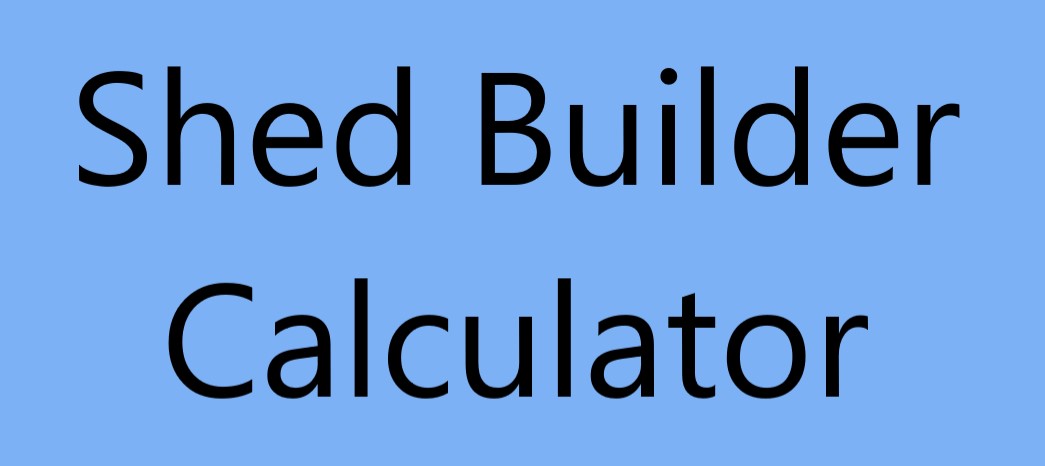READY YOUR SITE PAD
A level pad for your shed is critical and therefore very important to allow ALL doors and windows to operate as they should as well as to ensure roof and/or shed does not twist. So please make sure your pad is level prior to Shed delivery and placement.
Below are recommendations and suggestions only.
Winslow Sheds recommends the top of pad to be 6-18” larger than the footprint of the shed. (ie. if shed is 12×24, pad should be at least 13×25 to 15×27 on the top of the pad. Does not count side slop of pad if any [this happens with a stone pad])
If making or buying a ramp, consider extending the pad for the length of the ramp. Our ramps are built to lineup with a level shed and level ground in front where ramp will be placed. If shed is higher than ground, it maybe better to custom build your ramp onsite. Our standard ramps are 80″ wide by 60″ long and has an approx 2.1/12 pitch.
Pads can be created with any of the following materials with pluses and minuses.
- Concrete – is Ok but may not allow water to drain as well as a stone pad. Since concrete may cause water puddles if not perfectly flat or get water trapped against the skids causing rot over time. Winslow Sheds recommends if using concrete to make sure pad is completely flat and has a 1” slop for every 8’ of pad in the same direction as the skids on the shed. Yes, this causes the pad to not be level front to back and shed thereby having a slight slope. So weight out a level pad verses trapping water.
- Sand or Lime stone – Perfect for a pad because of the good drainage. No need to slope the stone as suggested with the concrete.
- Shale – Recommended only as a base layer below the sand or lime stone where slope are more than 4”
- Blocks – Not recommended for large sheds since access to center block would be very dangerous during shed placement. And if center blocks are not level with all others will cause shed to not be level. Therefore, only small sheds should use blocks (ie. 10×10 or smaller)
Note: Grass and top soil should be removed and ground somewhat leveled before installing any of the above materials. Pad/site final leveled once materials to create pad/site have all been installed. Keep in mind, the goal of the pad is to not only provide a level surface for your shed, but to allow water to drain away from the treated skids on the bottom of the shed.
FOUNDATION QUESTION ANSWERED to the best of my knowledge. There may be another way…and if someone knows, please let me know.
My hauler tells me he can place a shed on a foundation that is no higher than 18″ on front AND back of shed from ground to top of foundation.
Foundation should be build 90 degrees from bottom shed skids and no more than 8′ apart with a row the width of shed in front and back (and every 8′ min in between)
Then temporary 2×10 boards with spacers below (to keep boards from sliding) and plywood on top on each side for the length of the foundation/shed. These will be used to slide the shed onto the foundation and then removed once shed is in place.
Please make sure your foundation walls are connected in someway to insure they don’t move during shed install. We can not be responsible for your foundation.
what to do, ONCE SHED IS DELIVERED
Remember, our sheds are built with fresh cut pines with little time to dry. So when your shed arrives, keep it aired out. Keep windows open at least 4″ and doors open if possible; even in the rain. In a few weeks or sooner you’ll feel the moisture in the shed become less and less. If you do keep shed closed up, the wood may start to turn dark in some area. Spray a 50/50 bleach and water on the stains should resolve. Then let the shed breath by opening the windows, etc.
If you plan on staining the shed yourself. Let it dry out for a few weeks to a few months. Put a pencil mark next to one of the bats. In a week or two see if there is a gap in the pencil mark and the bat. If so, the wood is still shrinking. Continue doing this until the bats stop shrinking. That is a good sign the shed can be stained.
Staining prior to letting the wood dry can cause the bare wood under the bats to be exposed. We stain our wood prior to installing the bats and then again, once the bats are installed.
I hope the above info help. For comments, please feel free to email. Thanks
